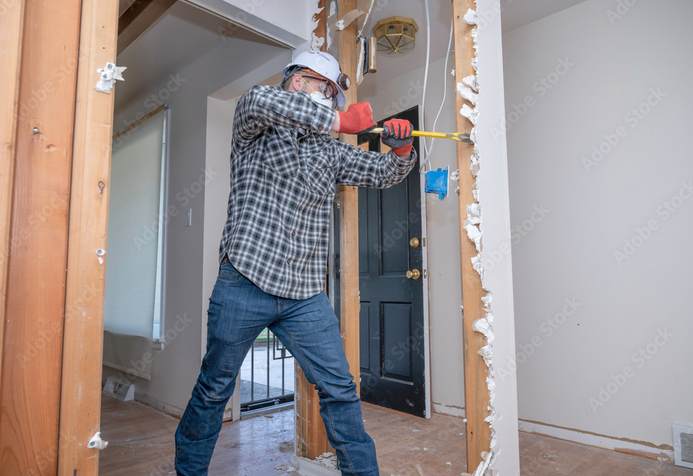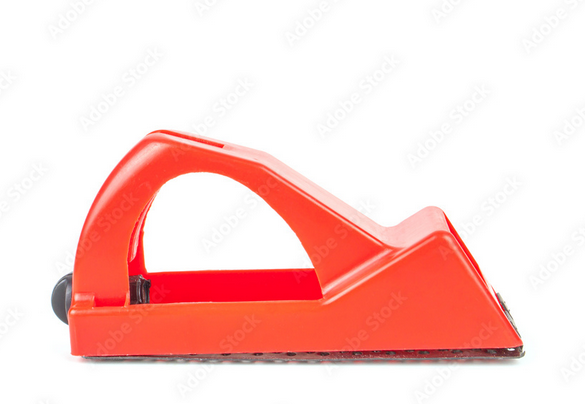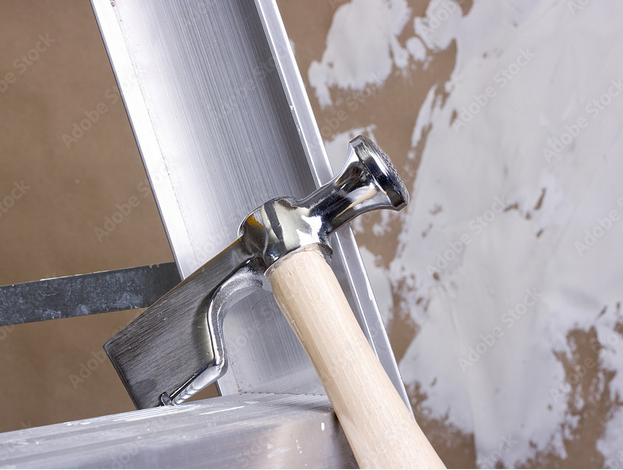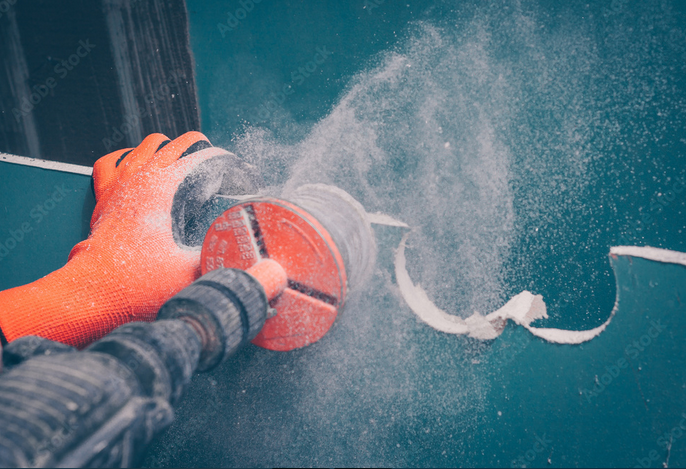How To Properly Shave Down Drywall?
Home Improvement Guide: FAQs On How To Properly Shave Down Drywall?

When installing drywall, it is virtually impossible to measure it in such a way that it fits just right on your walls. Once installed, you will have to trim it so that it fits the exact measurements of your room. The best way to ensure that your drywall looks great and drywall does not pose any safety issues is to shave off any protrusions you notice.
In this blog post, we will adopt a Q&A format to answer some of the top questions you may have on how to properly shave down drywall.
Q: Can I Shave Down Drywall?
A: Yes. To properly shave down drywall, you need a tool known a drywall rasp. When cutting drywall to patch a hole in your home, do not cut an exact fit, rather cut a slightly larger piece than you actually need and then use a drywall rasp to shave around the edges until it fits perfectly.
Q: Can I Completely Shave Down Drywall?
A: No. it is not really possible or advisable to completely shave down drywall. Drywall is usually made of a strong gypsum core and a top paper cover. The joints and corners of drywall usually contain a joinery compound. If you are looking to cut drywall around furniture such as a cabinet, a great idea would be to mark the length of drywall you need and remove that specific section.

Q: What Does a Drywall Rasp Do?
A: This is a tool that is usually used to give the edges of the drywall’s plasterboard a smooth finish. It is usually used to shape plasterboard in such a way that it can accurately and perfectly align against other sheets, doors, switches, sockets and windows.
If you are looking to make drywall cutouts for things such as windows and sockets or even add custom drywall art, you will need to use a rasp. A rasp will help you smoothen rough edges so that you get a perfect fit.
Q: How Does a Drywall Rasp Work?
A: A drywall rasp works much like a cheese grater. It usually has a flat surface and sharp-edged holes that usually shave off small and thin pieces of drywall material. This means that if you are looking to cut off a piece of drywall to cover an existing hole, you can cut a slightly bigger piece that you need and use this rasp to shave around the edges until it is a perfect fit.
You can also use a drywall rasp to enlarge holes in your drywall that are too small. Lastly, you can also use it to get rid of small bumps on rough sheet surfaces so that they can lie perfectly on other drywall sheets for a tighter and smoother joint.
Q: What Are Some Advantages of Owning a Drywall Rasp?
A: Apart from the fact that it will help you in shaping drywall professionally and with precision, a drywall rasp will also help you save a lot of time and money in the long run. For example, on installing drywall, it will need to be backfilled before you can put finishing touches on the surface. With a drywall rasp, you can take as little as 30 seconds to ensure that it is a perfect fit hence eliminating the need for backfilling. Further, with a rasp, you will make precise fittings that are strong and rigid hence minimizing the possibility that you will need to carry out expensive and time-consuming repairs later on.
A drywall rasp is an effective yet inexpensive tool that you should always have when handling drywall no matter whether you are an expert or novice drywaller. It will help you put together your drywall in such a way that it is smooth, has a beautiful finish and is bound to make the final results look professional.
Q: Can I Use a Drywall Rasp on Other Materials?
A: Rasps that are fitted with fine teeth can be put to several other uses. For example, they can be used in shaping clay models and foam. Rasps that have hardened steel blades can also be used to file wood, plastics, and soft metals like aluminum.

Q: What is a Drywall Hammer?
A: This is a handheld tool that is designed to be used when cutting drywall or driving nails through the drywall.

Q: What is a Surform Plane?
A: A surform plane usually looks like a cross between a plane and a rasp. Although it looks like food graters which have perforations on the metal sheet, a surform plane is different since it usually has sharpened rims. A surform plane is typically used in shaping materials rather than filing them.
Q: How Do I Cut Drywall?
A: Drywall is typically cut by pushing a sharp drywall knife through the paper cover on the finish side (in most cases this is the side with white paper). When once the knife pushes through the drywall, you should bend it to break the gypsum core. When cutting drywall, make sure to change the knife blade once it starts becoming dull to get a smooth quality cut.
Q: Is a Drywall Cut-Out Tool a Worthy Purchase?
A: A cutout tool is a great way to cut through drywall. It is usually relatively lightweight and fits well in your hands. Given that it is not that expensive, it is a handy tool to have around especially if you will be hanging/installing lengths of drywall.
Q: Can I Use a Router as a Cut-Out Tool?
A: In some instances, yes. One thing that you should always remember is that a router is different from a saw and each of these tools works differently. A saw is usually used freehand while a router is usually used in areas where a pattern is desired. It can also be used for edge work where it has to be fitted with a router bit that has a guide bearing or a fence provided.
Q: How Do I Shave a Wall Stud?
A: If you notice that your wall studs have minor bows you should use a power plane to flush the bows until they are flush with adjacent studs. All you need to do is hold a straight edge vertically along the affected studs, mark the bowed area and shave the bows off with your power plane.
Q: Must My Drywall End on a Stud?
A: Ideally, your drywall should always land on a solid surface such a stud. Though you can leave your drywall hanging, it is advisable since the drywall will likely crack and lead to other serious wall problems.
Q: Should I Stagger Drywall Joints Along My Walls?
A: Yes! Ensure that you stagger sheetrock strategically along your walls. Most drywallers recommend installing sheetrock boards in such a way that the joints in one row do not match joints in the next row. This strategy will help give you stronger walls and/or ceilings that are less susceptible to cracks.
Eastbay Drywall Repair Service in Milpitas, CA is ready to offer all kinds of drywall services for your dream home. We believe that our professionals can make any home splendid. Call us at (408) 338-6634.
